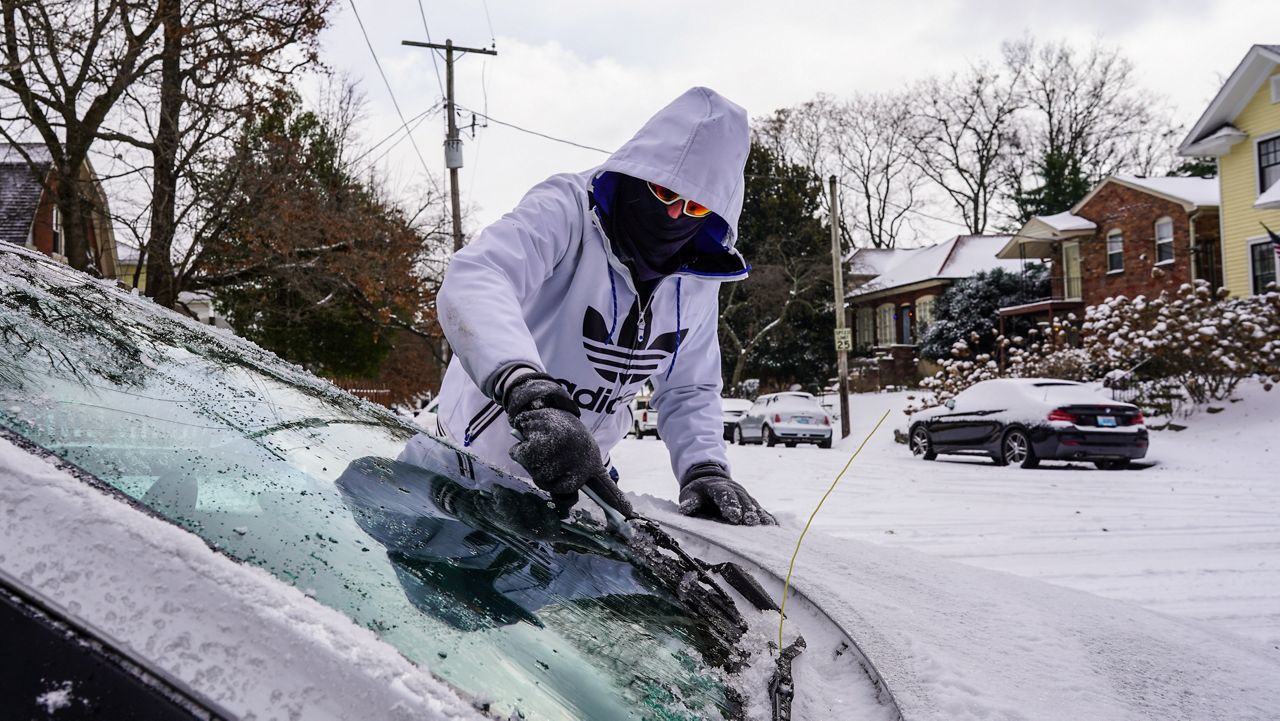In general, winter can be tough on vehicles, but when temperatures are below freezing, it could make the impact worse.
The American Automobile Association urges drivers to prep their vehicles for the cold.
“Winter is a tough season on vehicles,” said AAA spokesperson Kara Hitchens. “Last winter (Dec. 2022-March 2023), AAA emergency roadside service crews responded to nearly 274,000 calls for assistance in Ohio alone. The sudden onset of dangerously cold weather often leads to a spike in assistance calls, especially for dead batteries.”
One of the most crucial parts of the car is the battery. AAA said a battery can lose a third of its power in freezing weather, due to the oil of the car thickening as the air gets colder. That means parts move slower, and your battery has to work extra hard.
Here are some warning signs that your battery is in trouble:
- The car doesn't start right away, or the car makes a clicking noise when you turn the key
- Headlines or interior lights are dimmer than normal
- Powered windows are working slower than normal
- The battery has stains or signs of corrosion
- The battery is more than 3 years old
- There are long stretches of time (weeks or months) where the car isn't used at all
- You take a lot of short trips, so the car is turned on and off often
Here's what you can do to protect your car and its battery life:
- Park in a garage when possible to protect the car from the frigid air
- Turn off the lights, wipers and heaters before you turn off the car to save the battery's energy the next time you turn on the car
- Unplug phone chargers and USB cables
- Don't keep your heater on high for longer than you have to
- Have a technician clean the battery once you see corrosion on the battery
- If you have long stretches of time that you don't use your car in the winter, invest in a battery tender to help keep it charged
- Even if you don't use your car every day, make sure to turn it on every day and take it for a short drive or let it idle (this allows the battery to regain its charge)
Another part of your car to worry about is the tires. As the air gets colder, the pressure in tires drops.
Here's how to check the tires:
- Check the tire pressure and see if matches the levels found in either the owner's manual or the stick found inside of the driver's door jamb
- Look at the thread and test it with a quarter by putting George Washington's head upside down — if his whole head can be seen, it's time to get new tires
- Make sure your car is equipped with a spare tire, just in case
AAA said it's crucial for drivers to make sure their car has the proper fluids, that the levels are correct and are rated for the weather conditions. This include:
Anti-freeze/Coolant: This helps lower the freezing point of the cooling system. Without it, it could result in serious and expensive damage.
Washer Fluid: Make sure the windshield washer fluid reservoir is filled with a winter-blend cleaning solution.
Being stranded can happen to anyone, especially since vehicles could break down in extremely cold temperatures.
AAA said vehicles should have an emergency kit, warning that more than 40% of motorists don't carry one. It can include blankets and warm clothing, a reflective triangle, first-aid kit, flashlights and extra batteries, a snow shovel, ice scraper, water and non-perishable snacks.
Whether you have a long commute to work or just need to drive a short distance to the store, preparation is key to staying safe should a vehicle breakdown happen in extremely cold temperatures.



